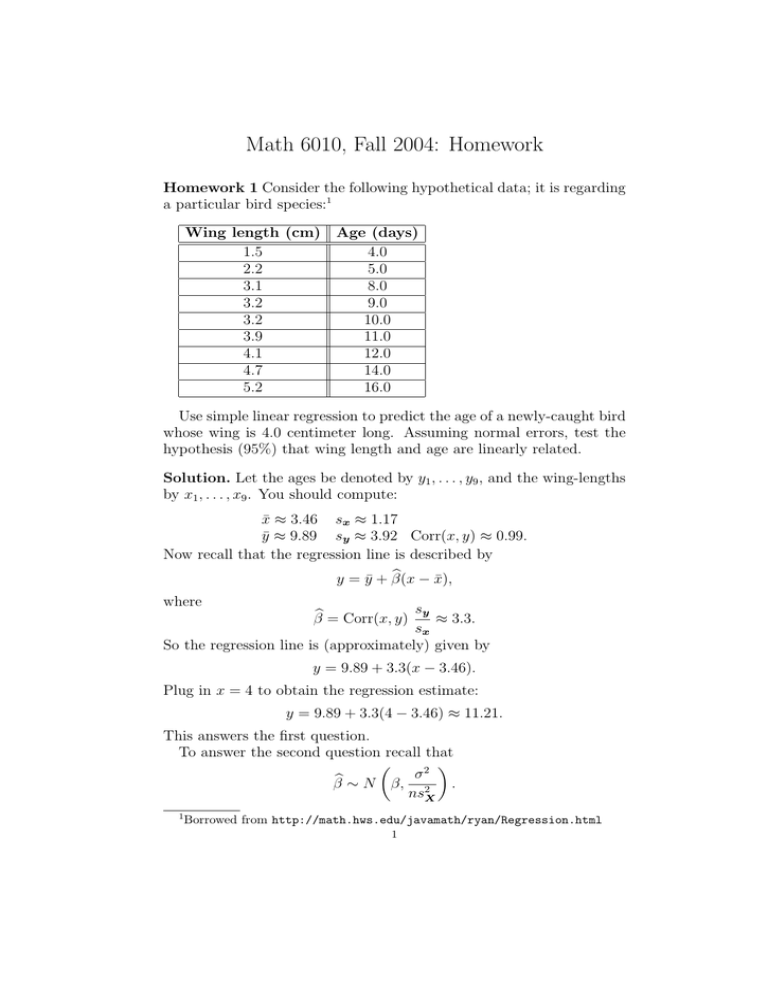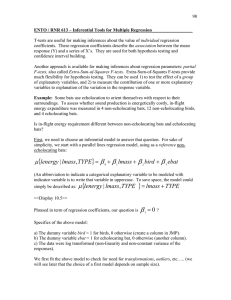Math 6010, Fall 2004: Homework
advertisement

Math 6010, Fall 2004: Homework Homework 1 Consider the following hypothetical data; it is regarding a particular bird species:1 Wing length (cm) Age (days) 1.5 4.0 2.2 5.0 3.1 8.0 3.2 9.0 3.2 10.0 3.9 11.0 4.1 12.0 4.7 14.0 5.2 16.0 Use simple linear regression to predict the age of a newly-caught bird whose wing is 4.0 centimeter long. Assuming normal errors, test the hypothesis (95%) that wing length and age are linearly related. Solution. Let the ages be denoted by y1 , . . . , y9 , and the wing-lengths by x1 , . . . , x9 . You should compute: x̄ ≈ 3.46 sx ≈ 1.17 ȳ ≈ 9.89 sy ≈ 3.92 Corr(x, y) ≈ 0.99. Now recall that the regression line is described by b − x̄), y = ȳ + β(x where sy βb = Corr(x, y) ≈ 3.3. sx So the regression line is (approximately) given by y = 9.89 + 3.3(x − 3.46). Plug in x = 4 to obtain the regression estimate: y = 9.89 + 3.3(4 − 3.46) ≈ 11.21. This answers the first question. To answer the second question recall that 2 σ βb ∼ N β, 2 . nsX 1 Borrowed from http://math.hws.edu/javamath/ryan/Regression.html 1 2 Here, n = 9. Pretend that this is large enough. [This is not so good, and will be addressed later on.] Then, one would expect that σ 2 = Var(y) ≈ s2y ≈ 3.922 ≈ 15.37. Also, s2x ≈ 1.172 ≈ 1.37. So, we would expect βb to have approximately a normal distribution with mean β and variance 15.37 ≈ 1.25. 9 × 1.37 Under H0 , βb ≈ N (0, 1.25) . Therefore, the sample’s βb = 9.89 gives us a P-value of ≈ 0.0. I.e., good reason to believe that H0 is false; i.e., β 6= 0; i.e., there is some linear relation between x and y.





